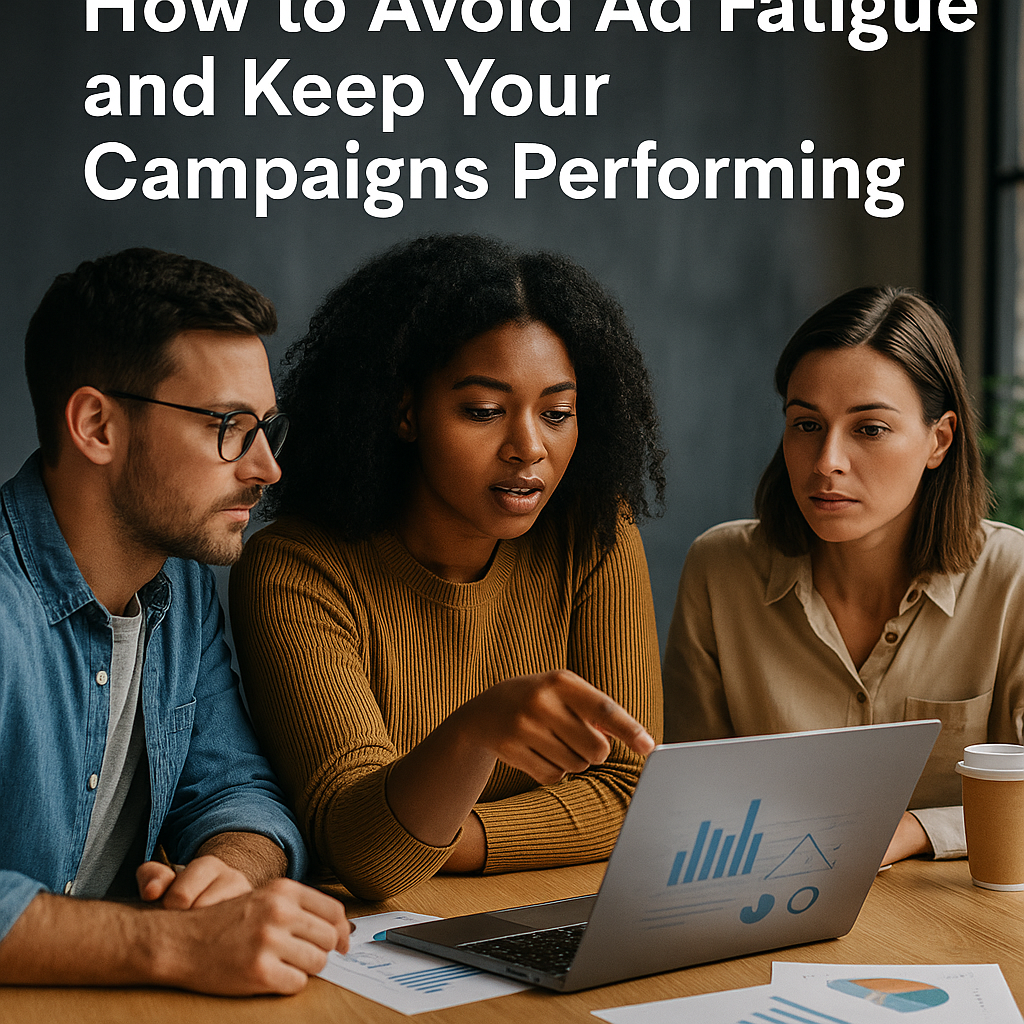Have you ever launched an ad campaign that started off strong, generating lots of clicks and conversions — only to slow down after a few days or weeks?
That’s not always due to audience issues or budget problems. In many cases, it’s caused by something called ad fatigue.
Ad fatigue happens when your audience sees the same ad too many times, causing them to lose interest and stop engaging. The result? Higher costs, lower performance, and frustrated advertisers.
In this article, you’ll learn what ad fatigue is, how to spot it, and the most effective ways to avoid or fix it so your campaigns stay fresh and profitable.
What Is Ad Fatigue?
Ad fatigue occurs when users become desensitized to your ads because they’ve seen them repeatedly over time.
It leads to:
- Lower CTR (click-through rate)
- Higher CPC (cost per click)
- Fewer conversions
- Wasted budget
Platforms like Facebook and Google notice this too — and reduce your reach or increase your cost as engagement drops.
Common Signs of Ad Fatigue
Look for these signals in your ad reports:
| Symptom | What It Means |
|---|---|
| CTR starts to drop | People are ignoring your ad |
| CPC increases | Less engagement, higher cost per click |
| Frequency goes up (>3–4) | Same people are seeing your ad repeatedly |
| Conversions drop | People aren’t taking action anymore |
| Comments like “I see this ad all the time” | Big red flag |
How to Avoid Ad Fatigue (Proactive Strategies)
✅ 1. Rotate Your Creatives Regularly
Don’t wait until performance drops — refresh your ads on a schedule.
How often?
- For high-budget campaigns: every 7–10 days
- For smaller budgets: every 2–3 weeks
What to rotate:
- Images and videos
- Headlines and primary text
- CTA buttons
- Ad formats (carousel, reels, stories, etc.)
💡 Even small changes (like background color or a new hook) can restore performance.
✅ 2. Use Dynamic Creative (Meta Ads)
Meta’s Dynamic Creative feature automatically mixes headlines, images, and descriptions to find the best combination.
It helps prevent fatigue by constantly changing what users see — without requiring you to manually build dozens of ad variations.
✅ 3. Segment and Rotate Audiences
Running one campaign to the same audience for months is a recipe for fatigue.
Do this instead:
- Create multiple custom audiences
- Rotate ad sets targeting different segments
- Use exclusions (e.g., exclude people who already clicked)
💡 Example: Show Version A to Lookalike 1%, Version B to Interest-based audience.
✅ 4. Monitor Frequency Closely
Frequency = average number of times each user sees your ad.
On Facebook, anything above 3–4 means fatigue may be setting in — especially for cold audiences.
Solutions:
- Refresh creatives
- Expand your audience
- Lower your budget
- Use reach or impressions caps in campaign settings
✅ 5. Run Campaigns in Bursts
Instead of running one ad nonstop, try pulsing your campaigns:
- Run for 5–7 days
- Pause for 3–5 days
- Relaunch with variations
This gives your audience a break and keeps your creative feeling new.
✅ 6. Create Creative Banks
Prepare multiple ad variations in advance, so you can swap them quickly without starting from scratch.
Organize a creative bank with:
- Hook variations
- Headlines and descriptions
- Different visuals (photos, animations, videos)
- Seasonal or limited-time offers
💡 Tools like Canva, CapCut, and ChatGPT can help you generate creative ideas fast.
What to Do If You Already Have Ad Fatigue
If your campaign is already showing signs of fatigue, take these steps:
🔄 Step 1: Pause Underperforming Ads
Give the algorithm a break — and stop spending on ads that aren’t converting.
🆕 Step 2: Launch Fresh Creatives
Change up your visuals, text, or format. Try a completely new angle or emotional hook.
👥 Step 3: Adjust Your Targeting
- Exclude users who have already seen the old ads
- Expand to new lookalike or interest-based audiences
- Test by age group or device to isolate better segments
📊 Step 4: Reanalyze the Funnel
Sometimes the ad is fine, but the landing page or offer is stale. Update those elements too.
Bonus: Use Ad Fatigue as a Testing Signal
When you notice fatigue:
- Ask why the ad worked in the first place
- What part of the creative message resonated?
- What headline or image got the best CTR?
Use that insight to build new angles that feel fresh — while staying connected to what worked.
Final Thoughts: Keep It Fresh, Keep It Profitable
Ad fatigue is normal — especially in long-running campaigns.
But smart traffic managers know how to:
- Monitor performance
- Plan creative rotations
- Adapt audience targeting
- Keep their message relevant and timely
Think of your campaigns like a TV show: even great episodes lose impact when played over and over.
Your job is to keep people interested, engaged, and excited to take action.
